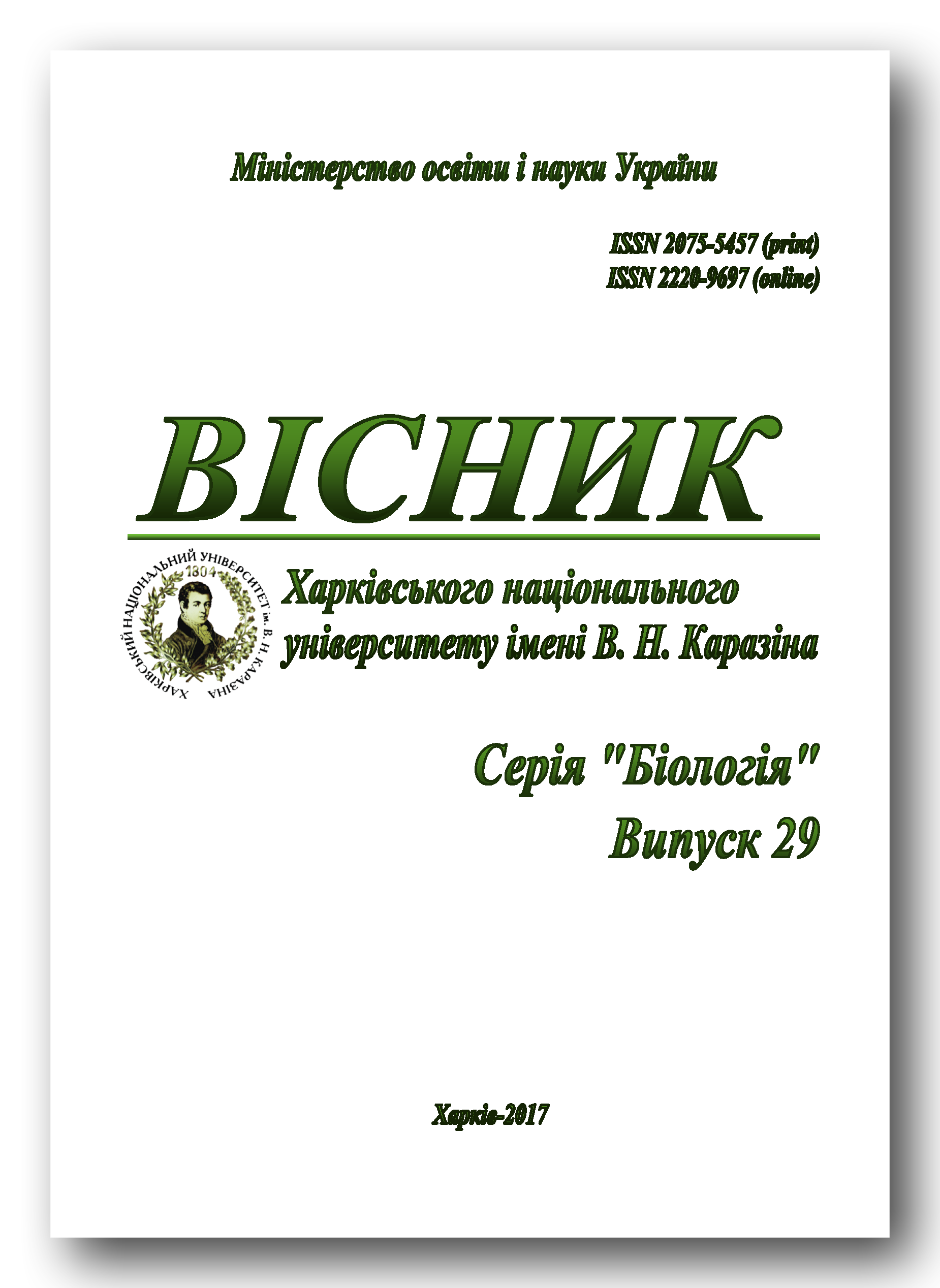The structure of the communities of breeding waterfowl and waterbirds of Orel’ river valley and its changes in last decades
Abstract
The valley of Orel’ river, a left bank tributary of Dnieper river, is an important breeding ground for waterfowl and waterbirds in the continental part of Ukraine. The composition and structure of waterfowl and waterbirds communities in Orel’ valley was estimated by the data of counts of breeding pairs and broods on 48 plots in 2005–2017 years. The changes of composition and structure of the communities were revealed by comparison with literature data for the periods of 1910–1920s and 1970–1980s. According to the counts data Coot (Fulica atra) (mean breeding density is 36,2 pairs/km2), Black-headed Gull (Larus ridibundus) (17,3), Black Tern (Chlidonias niger) (11,7), Great Egret (Egretta alba) (6,7), Mallard (Anas platyrhynchos) (4,5), Black-winged Stilt (Himantopus himantopus) (4,5), and Common Pochard (Aythya ferina) (4,3) are the most numerous species. The diversity of breeding species of gulls and terns has grown considerably since early XX century. The numbers of grebes, Greylag Goose (Anser anser), waders and marsh terns have declined for the last three decades. Besides, great colonies of Black-headed Gull and Black-necked Grebe (Podiceps nigricollis) have disappeared. The decline of the majority of species can be partly explained by cumulative negative impact of the fall of water level in lakes and the reduction of grazing pressure around them. However, Orel’ valley retains its important role in supporting populations of Greylag Goose and Common Pochard.
Downloads
Authors retain copyright of their work and grant the journal the right of its first publication under the terms of the Creative Commons Attribution License 4.0 International (CC BY 4.0), that allows others to share the work with an acknowledgement of the work's authorship.




